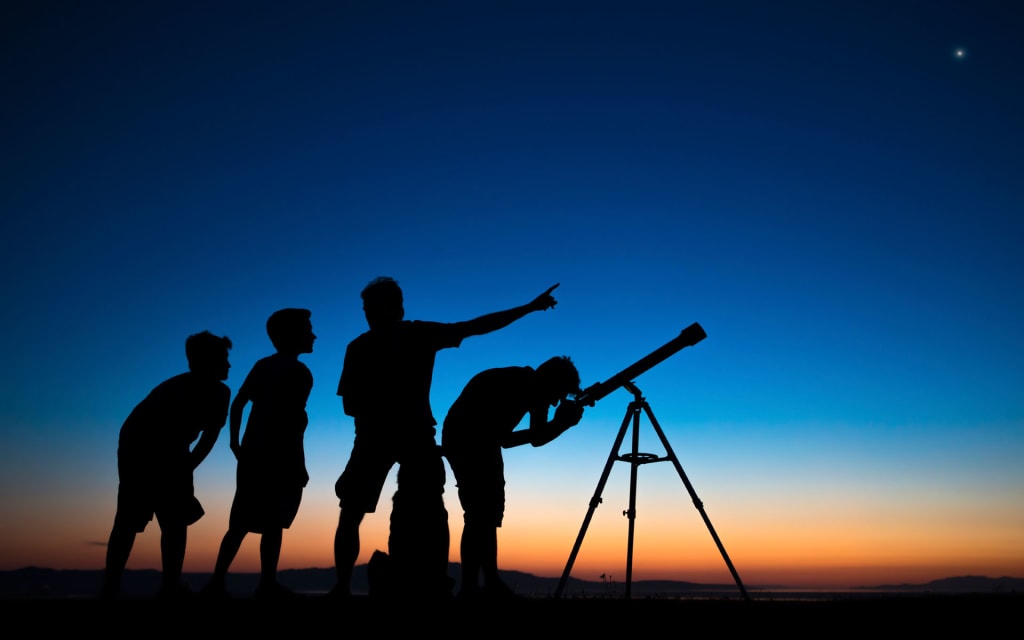Best Telescopes for Astronomy
Choosing the best telescopes for Astronomy is a matter of balancing performance and price.

Deciding which telescope to buy can often be confusing, especially if you are buying for someone else or if you're new to astronomy and are looking for something entry-level. Whether you're checking out some of the best astronomy books for beginners, or consider yourself an expert along the lines of the pioneers of astronomy, the guidance of this list of the best telescopes for Astronomy will demystify the key to choosing the perfect telescope for your price range.
Orion’s StarBlast is a solid telescope with an aperture of between 100 and 150mm. While the StarBlast does have some large advantages among the best telescopes for Astronomy, it does have a couple of drawbacks. This telescope is easy to use due to Orion’s inclusion of the Orion EZ Finder II, which allows you to just move the telescope around until the red dot is pointed to the area in the sky you wish to see. While this ease of locating objects is important, the telescope is not very portable, weighing over 20 pounds. If you intend to leave the telescope in one place, this telescope would be a solid choice, but if you want to take it with you to go out into the country to see the stars, you might want to keep reading.
This is one of the best telescopes for Astronomy for multiple reasons. One is the overall affordability for a 50mm aperture telescope. This is a good entry-level telescope for those who are considering starting stargazing but are just exploring how to buy a telescope. You still get plenty bang for your buck, and can see many important locales in the sky, despite the smaller aperture. This telescope includes three different eyepieces that increase the range. The last huge bonus is that it comes with TheSkyX software, an Astronomy software for your computer that allows you to input your location and see what is around you so you can focus on what is important for you to see.
The NexStar 6 is one of the higher-end telescopes among the best telescopes for Astronomy. This is a high-powered telescope that allows you to see more of the night sky than many other telescopes, with a 150mm aperture and 1500mm focal length. It is an excellent choice for the hobbyist that wants to explore Astrophotography and objects further aware from our little blue Earth. This telescope is also computerized with SkyAlign, to ensure that you are looking in the correct direction after alignment. This telescope also stores over 40,000 objects in the sky in its onboard database. This is not a point and look telescope, but one that needs time to learn. If you are looking to upgrade from an entry-level telescope, this is a wonderful starting point.
When you buy Gskyer’s Infinity telescope, you are getting a portable telescope at a reasonable price, which is what qualifies it as one of the best telescopes for Astronomy. This telescope comes with three eyepieces of varying magnification. This is an entry-level telescope like the Celestron PowerSeeker, but with more power due to the large aperture of 70mm. The additional power can be used to see more detail on objects in the sky, but comes with an increase in price. This is an upgrade from the PowerSeeker not just because of the power, but also because of the portability. It weighs just over 5 lbs and comes with a carrying case so you can take it out into the world and not have to be stuck stargazing from one point.
The AstroMaster is Celestron’s answer to Gskyer’s Infinity of the same aperture size (70mm). There are many similarities between the two telescopes, such as aperture size and the size of the telescope itself. What makes the AstroMaster one of the best telescopes for Astronomy is the StarPointer, the fact that there are no tools needed to set it up, and an easy handle to direct the telescope. The price point for both telescopes are similar. Celestron includes two eyepieces with the telescope to help provide clearer views of the skies. It does weigh more than the Infinity and is less portable, so if portability is important, this would not be the choice for you, as it weighs in at over 20 lbs.
As a direct competitor to Gskyer and Celestron, Orion produced the GoScope II. This little telescope is one of the best telescopes for astronomy due to its affordability and ultra-portability, with an included customized backpack for the telescope. The backpack allows for easy transport and storage of the telescope when not in use, but the telescope still has the power of the Infinity and AstroMaster. The GoScope II also comes with a moon map that helps you find and learn about the features on our moon.
This telescope is solely an entry-level telescope, but is also one of the least expensive options on this list. While the 50mm aperture is one of the smaller ones on this list, it makes up for it in terms of overall bargain and portability, weighing less than 2 lbs. The 90X comes with three eyepieces that allow up to 90 times magnification to see close objects in the solar system. You can easily use this to take pictures without a lot of additional adaptors, which would be needed for photography on other telescopes.
The SpaceProbe is Orion’s competition to the Celestron NexStar 130 SLT. There are many similarities to the NexStar 130, but SpaceProbe includes the Starry Night SE software instead of being dependent on an onboard database. The telescope is also manual instead of computerized like the NexStar 130. This allows for greater flexibility and customization of what you want to see, as you don't have to rely on a prescribed object on the NexStar’s database. It comes with two eyepieces that allow greater detail to be seen.
The SpaceProbe is Orion’s competition to the Celestron NexStar 130 SLT. There are many similarities to the NexStar 130, but SpaceProbe includes the Starry Night SE software instead of being dependent on an onboard database. The telescope is also manual instead of computerized like the NexStar 130. This allows for greater flexibility and customization of what you want to see, as you don't have to rely on a prescribed object on the NexStar’s database. It comes with two eyepieces that allow greater detail to be seen.
The Infinity is the highest ranked entry-level telescope. The least expensive option of the beginner telescopes for astronomy, it has a few features that the others do not. The most impressive is Autostar Suite Astronomy. This is the only entry-level telescope that includes this type of software. The telescope is the average weight of most starter telescopes with a 50mm aperture and comes with three eyepieces. Though it has similar specifications to other starter telescopes, the software and price make this the top entry-level telescope of the best telescopes for astronomy.
The top option for intermediate-level telescopes. With an aperture size of 127mm and a 1000mm focal length, it is small for its performance capabilities. It is also the most affordable in the grouping and the most portable, coming in at 17 lbs. It includes the basics of others in the group—stargazing software called TheSkyX and three lenses for magnification. The 127 EQ PowerSeeker is on par with the other telescopes in the group despite the smaller aperture and lower price.
The 10mm Travel Scope from Celestron is one of the most well-rounded options of the best telescopes for Astronomy. The 70mm aperture size of this travel telescope is on par with the rest of the travel telescopes listed here, but there are a few differences. It is the lightest of the travel telescopes at just over 3 lbs. It comes with its own travel backpack and includes two different eyepieces and TheSkyX Astronomy software. No tools are needed to set this telescope up, and its portability, affordability, and ability to see as far as Jupiter qualify it as one of the best telescopes for Astronomy. This is the best for a mid-aperture sized telescope with extra portability features.
About the Creator
Futurism Staff
A team of space cadets making the most out of their time trapped on Earth. Help.






Comments
There are no comments for this story
Be the first to respond and start the conversation.